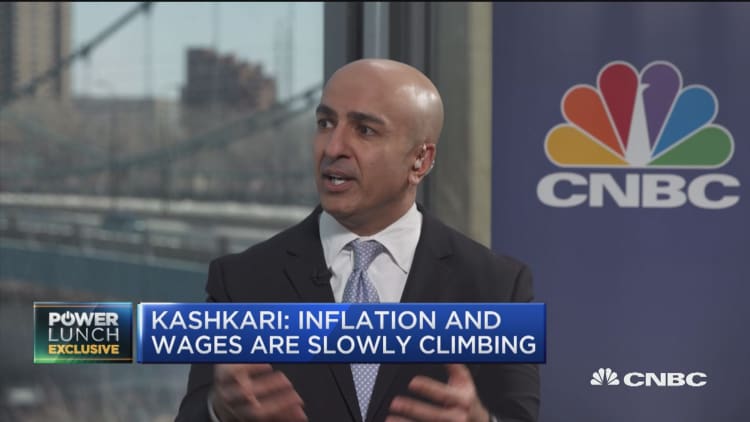
The yield on the 10-year Treasury note hit 2.96 percent Friday, hitting its highest level since Jan. 10, 2014.
The two-year yield hit 2.461 percent, meanwhile, its highest level since Sept. 8, 2008, when the two-year yielded as high as 2.542 percent. Friday's moves cap a week of rising rates accredited to geopolitical and trade tensions, rising commodity prices and an uptick in German bund yields.
As of the latest reading, the yield on the benchmark 10-year Treasury note was higher at around 2.96 percent at 3:52 p.m. ET, up roughly 10 basis points for the week. The yield on the 30-year Treasury bond was up at 3.146 percent, approximately 8 basis points higher since Monday. Bond yields move inversely to prices.
The 10-year Treasury note yield is especially important given its role in helping set rates for a whole range of business and consumer loans, including home mortgages.
"We've seen a bounce in the economic activity and a bounce in the inflation numbers. Now with the Fed looking to hike at least two more times throughout the end of the year, we're seeing softening at the long end of the curve," said Robert Tipp, chief investment strategist at PGIM Fixed Income.
"Here we are scratching new highs, but I would guess somewhere between here and 3.1 percent we'll see the sell-off run out of gas."
Burgeoning inflation expectations led to a rise in interest rates earlier this year, sparking a widespread equity sell-off as stock traders grew nervous over whether the economy was ready for increased borrowing costs.
Volatility in February and March sent both the Dow Jones industrial average and the S&P 500 into correction territory, though both have since recovered some of their losses.
Rising rates can also be bad for stocks because, at some point, higher yielding bonds can be more compelling investments.
"I am calling this a momentum trade because it has largely been driven by commodity prices," said Kevin Giddis, head of fixed income capital markets at Raymond James. "As we have learned over the last few years, those baskets can rise and fall at any time as certain short-term factors cause spikes in prices, then settle back down into a more 'normal' trading range."
As a main suspect in rising inflation expectations this week, crude prices notched multiyear highs amid rising geopolitical tensions.
WTI oil prices hit a three-year high above $69 a barrel this week and settled bove $68 on Friday. The international benchmark, Brent crude, was above $73 on Friday after also hitting its highest level since November 2014 this week.
Treasurys
An uptick in global rates also appeared to buoy U.S. Treasury yields throughout the week, with the 10-year German bund adding nearly 10 basis points from Wednesday morning.
The 10-year bund hit a high of 0.606 percent Friday, its highest level since March 19, when the bund yielded as high as 0.607 percent.
"Just as low [foreign rates] have been keeping U.S. yields from rising, they will also have the opposite effect as they rise," Gary Pollack, head of fixed-income trading at Deutsche Bank Private Wealth Management, said Thursday.
The move upward in long-term yields has also — at least briefly — stalled the steady flattening in the yield curve that's occurred over the past few months. In normal times, the yield curve slopes upward, reflecting a belief in future economic expansion.
However, when short-term interest rates exceed long-term rates, market sentiment suggests that the long-term outlook is worse; an inverted curve is often considered a signal of a pending economic recession.
—CNBC's Gina Francolla contributed to this report.



